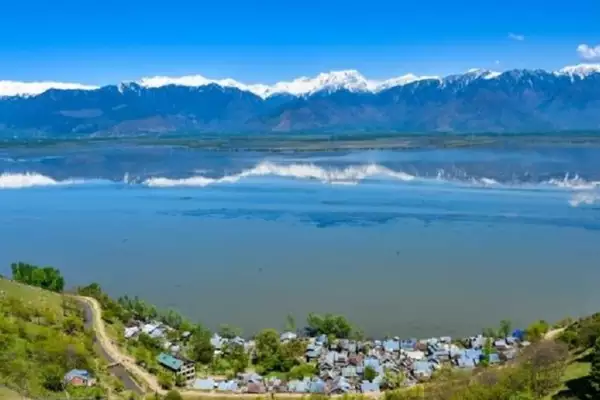Efforts are underway to remove the critical siltation that is choking Wular Lake, the largest freshwater lake in India.
About Wular Lake:
- Wular Lake is the largest freshwater lake in India and the second largest in Asia.
- Situated in the Bandipore district of Jammu and Kashmir, the lake lies at an altitude of 1,580 meters on the foothills of Haramuk Mountain.
- The lake is primarily fed by the Jhelum River.
- The lake covers an area of approximately 200 square kilometres, stretching nearly 24 kilometres in length and 10 kilometres in breadth.
- Formation: The lake basin was formed due to tectonic activity, and it is believed to be a remnant of the ancient Satisar Lake.
- Zaina Lank: The lake hosts a small island called ‘Zaina Lank,’ which was constructed by King Zainul-Abi-Din.
- Ramsar Site: In 1990, Wular Lake was designated as a Wetland of International Importance under the Ramsar Convention.
- Biodiversity:
- The lake is vital for wintering, staging, and breeding birds, including species like the black-eared kite, Eurasian sparrow hawk, and Himalayan golden eagle.
- It also contributes to 60% of Jammu and Kashmir’s fish production.
- Environmental Challenges:
- The lake faces severe threats from siltation, pollution due to fertilizers, animal and human waste, and the conversion of surrounding areas into agricultural land. Hunting pressure on waterfowl and migratory birds also poses significant challenges.
Ref: Source
| UPSC IAS Preparation Resources | |
| Current Affairs Analysis | Topperspedia |
| GS Shots | Simply Explained |
| Daily Flash Cards | Daily Quiz |
Frequently Asked Question:
What is Wular Lake?
Wular Lake is the largest freshwater lake in India, located in Jammu and Kashmir.
How large is Wular Lake?
Wular Lake covers approximately 200 square kilometers, with a length of 24 kilometers and a breadth of 10 kilometers.
What is the origin of Wular Lake?
The lake basin was formed due to tectonic activity and is believed to be a remnant of the ancient Satisar Lake.



